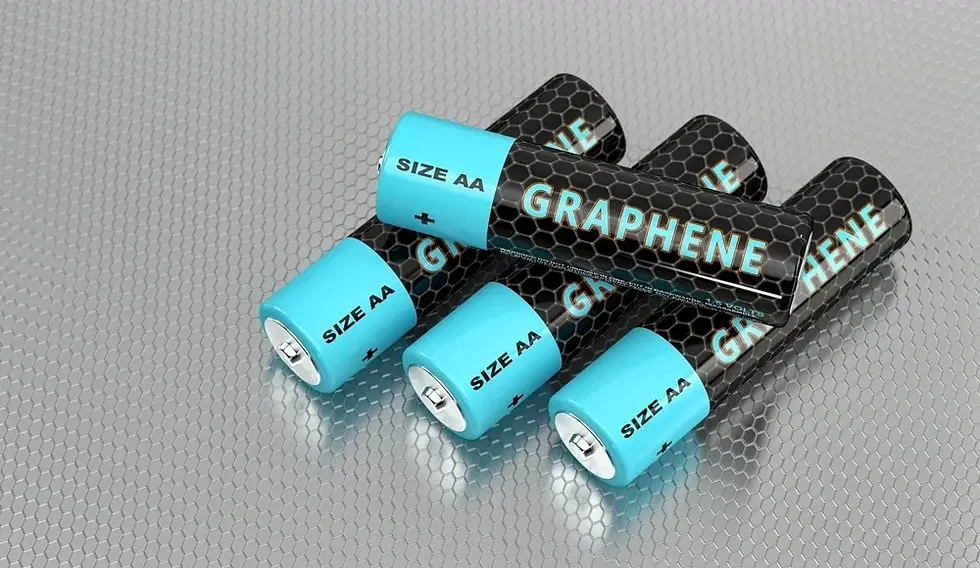Revolutionizing Renewable Energy: The Impact of Graphene Batteries
- linjf07
- May 20, 2024
- 2 min read
As the quest for sustainable and clean energy solutions intensifies, graphene batteries emerge as a promising contender to transform the landscape of energy storage. Known for its exceptional properties, graphene could be the key to overcoming the limitations of traditional battery technologies in renewable systems.
What Makes Graphene Special?
Graphene, a material composed of a single layer of carbon atoms arranged in a two-dimensional honeycomb lattice, boasts extraordinary electrical, thermal, and mechanical properties. It outshines conventional materials with its ability to conduct electricity faster, its strength surpassing steel, and its remarkable lightweight. When applied to batteries, graphene's capabilities suggest a leap forward in performance, potentially surpassing the limitations of current lithium-ion technology by offering quicker charge times, increased capacity, and greater durability.
Graphene Batteries and Renewable Energy
Integrating graphene batteries into renewable energy systems could significantly enhance the efficiency of energy storage. Their superior electrical conductivity and rapid charging abilities enable them to store intermittent energy sources like solar and wind more effectively. This could solve one of the most pressing issues in renewable energy: the variability in power generation, ensuring a steady and reliable power supply regardless of weather conditions.
Current Research and Developments
Innovative strides in graphene technology have led to several breakthroughs. Notably, researchers have developed ways to enhance the scalability of graphene production, making it more viable for commercial applications. Universities and private companies worldwide are collaborating to harness graphene’s potential in batteries, with prototypes already demonstrating their capability to charge much faster than traditional batteries while retaining more power.
Challenges Ahead
Despite the excitement surrounding graphene, several challenges remain. Technical hurdles in manufacturing high-quality graphene at scale still exist and integrating it into existing battery manufacturing processes is complex. Economically, the high cost of initial development and potential market disruption pose significant risks. However, ongoing research and government funding are aiding in overcoming these barriers, promising a brighter future for graphene-based technologies.
Future Outlook
The potential impact of graphene batteries on renewable energy storage is vast. Experts predict that within the next decade, these batteries could become a staple in energy systems, drastically reducing our reliance on fossil fuels and lowering the carbon footprint of energy storage solutions. As research progresses, the widespread adoption of graphene batteries could be a major milestone in achieving global sustainability goals.
Conclusion
Graphene batteries represent a thrilling advancement in the quest for efficient and sustainable energy storage solutions. With their superior properties and growing feasibility, they are poised to play a crucial role in the future of renewable energy.
Embracing graphene battery technology could accelerate our transition to a more sustainable and energy-secure world. As we continue to innovate, the promise of graphene stands as a testament to the potential of modern material science to reshape our energy future.







Comments